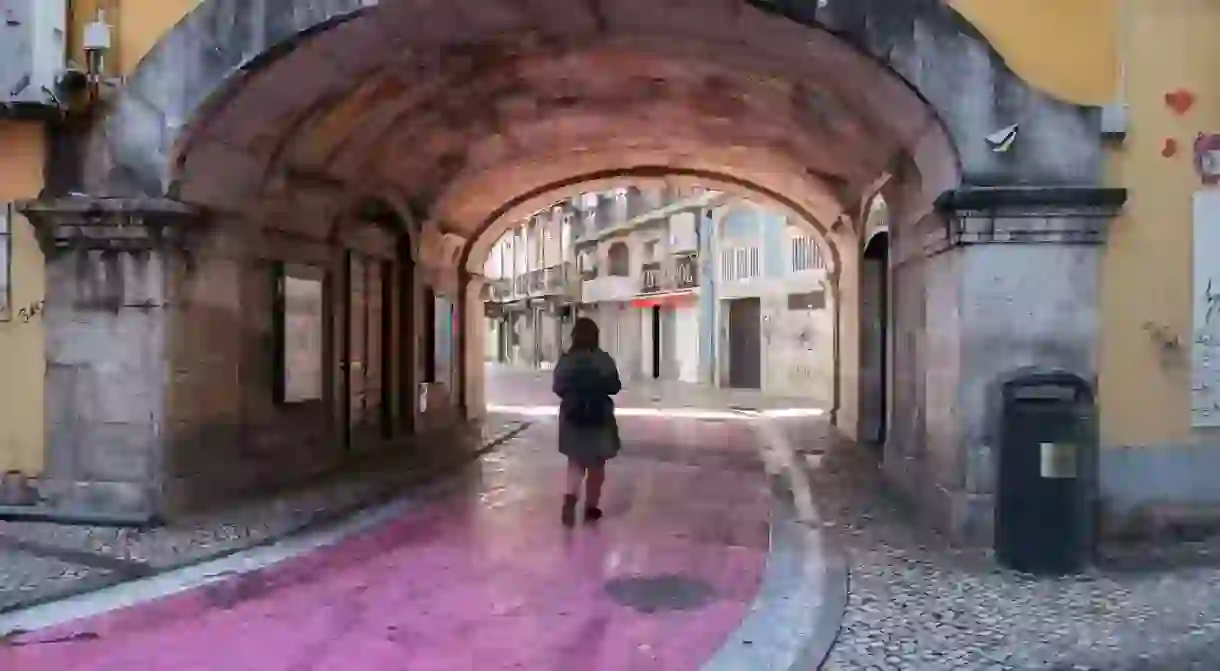Rua Nova do Carvalho: How Lisbon’s Red Light District Turned Pink

Sometimes, the neighborhoods with the most colorful histories are the easiest to convert into new trendy hangouts, and that was certainly the case with Lisbon’s Rua Nova do Carvalho.
Once the meeting point for sailors, local criminals, and prostitutes, it developed an unsavory reputation, but the scandalous buildings have turned into works of art and now serve as fascinating points for conversation. Lisbon’s “Red Light District” is long gone, but the Pink Street left in its wake is brighter than ever.
Cais do Sodré is easily one of Lisbon’s most popular neighborhoods and home to standout hot spots such as the Time Out food court in the Mercado da Ribeira. Located on the river and centralized with the metro, bus, and train station connecting downtown Lisbon to other parts of the city and nearby districts, most visitors find it somewhere on their itineraries. The nightlife, however, continues to be one of the major reasons why people search for Cais do Sodré.


Pink Street’s “facelift” happened in 2011, in an effort to turn the neighborhood’s atmosphere and reputation around. The doors closed on the brothels and run-down bars and opened to welcome cozy cafés and a new kind of nightlife. Like many neglected spots around Lisbon, Rua Nova do Carvalho used its history as a stepping stone instead of as an obstacle, and some of the new bars and venues kept memories from the past, such as fishermen nets and vibrant color schemes, in the décor.



The party in Lisbon may begin in Bairro Alto, but many times it now ends around Pink Street, known locally as Rua Cor-de-Rosa. Among the most popular bars are Penão Amor and Sol e Pesca and a few oldies that have stuck around but with a new energy. Music Box, one of the city’s hottest dance clubs, also calls the area home, beneath the bridge.














